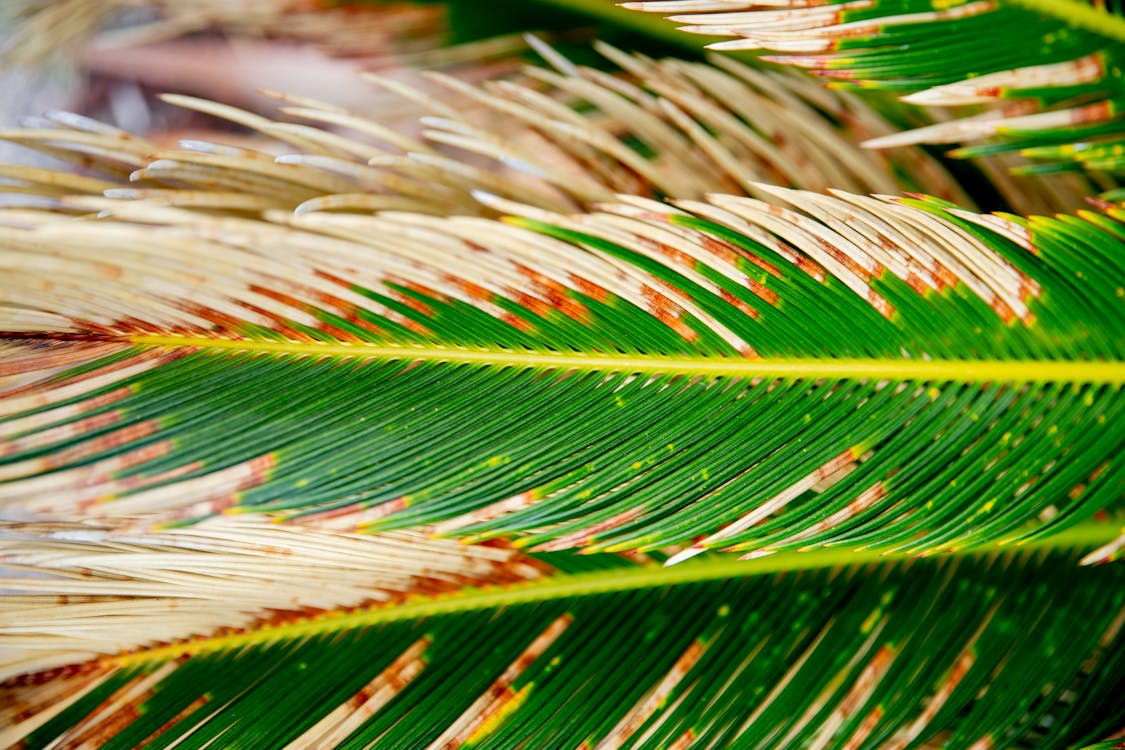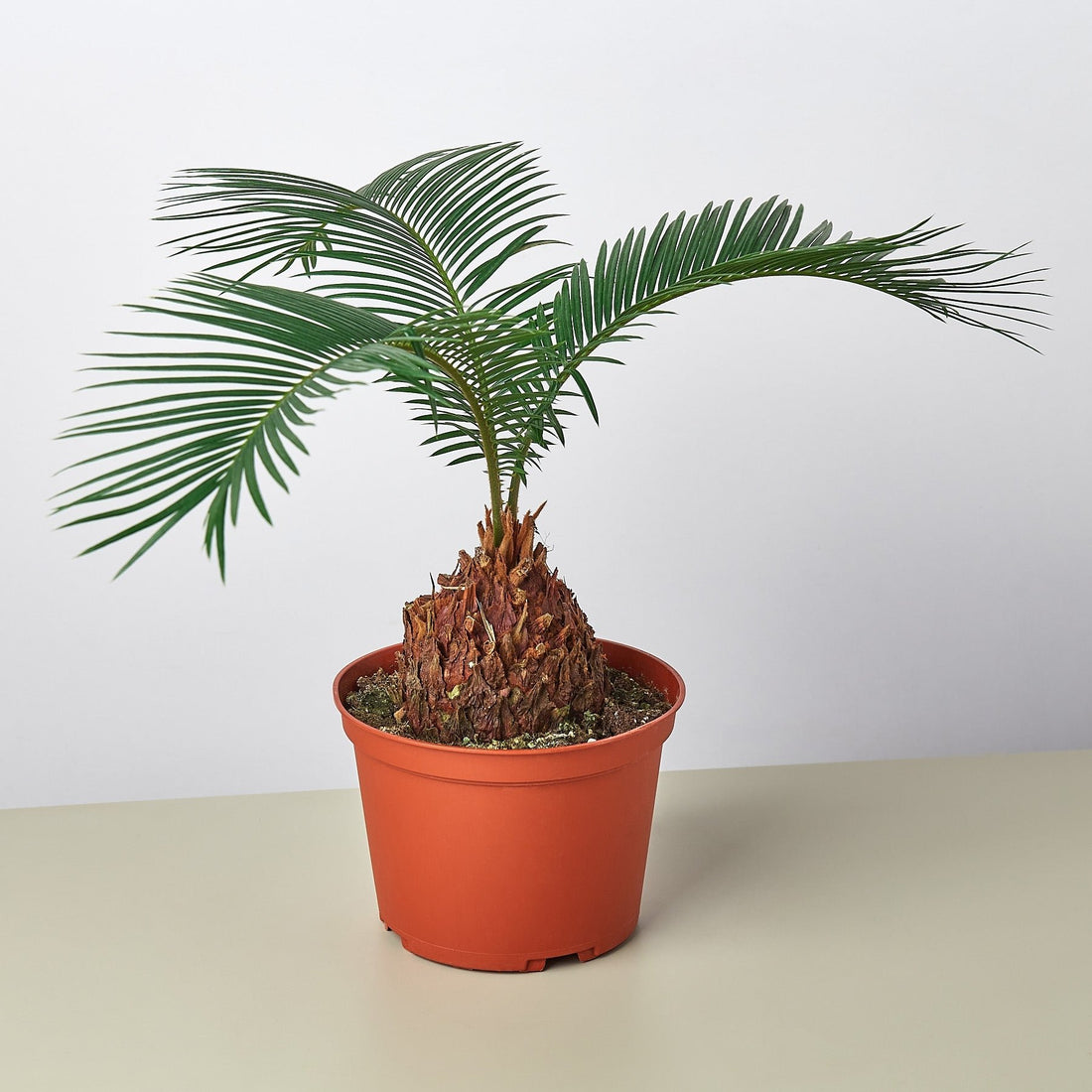The Ultimate Guide to Sago Palm Care: Cultivating Your Own Cycas Revoluta
Sago palms (Cycas revoluta), also known as king sago palms, are magnificent palm-like plants that add a prehistoric ambiance to any setting, indoors or out. Despite their name, sago palms are not true palms but cycads, a group of ancient plants that have existed since the dinosaur era. This guide is essential for anyone looking to grow a large sago palm, providing insights into their care, types, and common issues. Discover why these slow-growing, symmetrical beauties are worth the effort, making an exotic addition to your plant collection.
Article Outline
- Introduction to Sago Palms
- Types of Sago Palm: Exploring Varieties
- How to Grow Sago Palm Successfully
- Essential Sago Palm Care Tips
- Potting and Repotting: Best Practices
- The Art of Pruning Sago Palms
- Common Problems with Sago Palms
- The King Sago Palm: A Closer Look
- Sago Palm as a Houseplant: Tips and Tricks
- Propagation: Growing New Sago Palms

Photo by Maria Orlova: https://www.pexels.com/photo/potted-sago-palm-and-chamaerops-tree-decorated-yard-of-cozy-villa-in-sunlight-4913314/
Introduction to Sago Palms
Sago palms (Cycas revoluta), known for their rugged, feather-like foliage, are a popular choice among gardeners and houseplant enthusiasts alike. Native to southern Japan and China, these ancient plants thrive in a variety of conditions but require specific care to flourish. Understanding the basics of sago palm care is crucial for nurturing these plants, whether grown indoors in pots or outdoors in warmer climates.
Types of Sago Palm: Exploring Varieties
While the Cycas revoluta, or king sago, is the most commonly known variety, there are other types of sago palms to consider. Each variety exhibits unique characteristics in size, leaf shape, and growth habits. Exploring these types can help gardeners choose the right sago palm for their landscape or indoor setting.
How to Grow Sago Palm Successfully
Growing sago palms is a rewarding experience when their specific needs are met. These plants prefer well-drained soil and indirect light, making them suitable for both indoor and outdoor environments. We'll cover the essentials of selecting the right pot, soil, and location to ensure your sago palm thrives.
Essential Sago Palm Care Tips
Proper care is vital for the health and growth of sago palms. This section delves into watering, fertilization, and light requirements. Sago palms are slow-growing and can suffer from overwatering or insufficient light, so understanding the balance is key to their care.
Watering
- Frequency and Amount: Sago palms do not like to sit in waterlogged soil, making proper watering practices critical. The soil should be allowed to dry out partially between waterings. During the active growth period in spring and summer, water your sago palm more frequently, ensuring the topsoil feels dry to the touch before watering again. In winter, reduce watering to prevent root rot, as the plant's growth slows down.
- Technique: When watering, do so thoroughly, allowing water to drain freely out of the pot's bottom. This ensures the roots are adequately moistened without becoming waterlogged.
Fertilization
- Type of Fertilizer: Use a balanced, slow-release fertilizer that is specifically designed for palms or similar types of plants. These fertilizers will have the right combination of nitrogen, phosphorus, potassium, and essential trace elements that sago palms need to thrive.
- Frequency: Fertilize your sago palm during the growing season (spring and summer) following the product's recommended frequency, usually every two to three months. Avoid fertilizing in the fall and winter when the plant's growth naturally slows.
- Application Tips: Apply fertilizer evenly around the soil's surface, avoiding direct contact with the trunk to prevent burn injury. Water the soil well after applying fertilizer to distribute the nutrients evenly and reduce the risk of root burn.
Light Requirements
- Indoor Plants: When grown indoors, sago palms require bright, indirect light to thrive. A location near a window that receives filtered sunlight for most of the day is ideal. Direct, harsh sunlight can scorch the leaves, while too little light can lead to weak growth and sparse foliage.
- Outdoor Plants: Outdoors, sago palms can tolerate a range of light conditions, from partial shade to full sun. However, in very hot climates, providing some afternoon shade can help protect the plant from excessive heat stress and sunburn.
Additional Tips for Optimal Care
- Humidity: While sago palms can adapt to various humidity levels, they appreciate a bit of extra humidity, especially when grown indoors. A pebble tray or occasional misting can help increase humidity levels.
- Temperature: They prefer temperatures between 70°F and 90°F (21°C to 32°C) but require protection from frost and extreme cold, as they are not cold-hardy.
- Monitoring for Pests and Diseases: Regularly inspect your plant for signs of pests or diseases. Early detection and treatment can prevent minor issues from becoming major problems.

Photo by Gül Işık: https://www.pexels.com/photo/potted-exotic-cycas-revoluta-plant-growing-near-door-of-old-mansion-6312128/
Potting and Repotting: Best Practices
Sago palms grown in pots require particular attention to potting and repotting. Due to their slow growth, they don't need frequent repotting, but ensuring good drainage and the right pot size is crucial. We'll guide you through the process, including the best potting mix and when to repot your sago palm.
-
Best Potting Mix: Use a well-draining potting mix, such as a blend designed for palms or cacti, which usually contains a mix of soil, sand, and perlite or vermiculite.
-
Pot Size: Choose a pot that's slightly larger than the current one, as sago palms prefer being slightly root-bound. Ensure the new pot has adequate drainage holes to prevent water accumulation.
-
When to Repot: The best time to repot is in the spring or early summer, which aligns with their active growth period. Signs that your sago palm needs repotting include crowded roots visible at the soil surface or through drainage holes, slow growth, or water draining too quickly through the pot (indicating a lack of soil to hold moisture).
-
Repotting Process: Gently remove the plant from its current pot, shake off excess soil, and inspect the roots, trimming any that are dead or rotting. Place the plant in the new pot with fresh potting mix, filling in around the roots, and water thoroughly.
The Art of Pruning Sago Palms
Pruning is essential for maintaining the health and appearance of sago palms. Removing old fronds and managing the plant's shape not only enhances its beauty but also prevents potential problems. Learn how to prune correctly to avoid damaging your sago palm.
- When to Prune: The best time to prune is during the spring or early summer when the plant is actively growing.
- What to Remove: Cut off yellow, brown, or damaged fronds at their base, as close to the trunk as possible, without damaging it. Also, remove any flower structures to redirect energy to new growth.
- Tools: Use clean, sharp pruning shears or a saw for thicker fronds. Sterilize your tools before and after use to prevent the spread of disease.
- Safety: Wear gloves and long sleeves, as the fronds can be sharp and some people may have skin reactions to the plant material.
Pruning correctly helps improve your sago palm's appearance and health, encouraging more vigorous growth and preventing disease and pest infestations.

Photo by Tatiana Syrikova: https://www.pexels.com/photo/sago-palm-in-close-up-photography-3968167/
Common Problems with Sago Palms
Sago palms can encounter several issues, including pests like spider mites and diseases such as sooty mold. Early identification and treatment are crucial for managing these problems effectively. This section covers common signs of distress and how to address them.
Pests
Spider Mites
- Signs of Infestation: Spider mites are tiny pests that can be hard to see without magnification. Indications of their presence include yellowing or bronzing of leaves, fine webs on the plant, and tiny white or yellow specks (mite damage).
- Treatment: Increase humidity around your plant, as spider mites thrive in dry conditions. Rinse the plant with a strong stream of water to dislodge the mites. For severe infestations, use insecticidal soap or neem oil, applying it directly to the affected areas according to the product instructions.
Diseases
Sooty Mold
- Signs of Sooty Mold: This fungal disease manifests as a black, soot-like coating on the leaves. While sooty mold itself doesn't infect the plant tissue, it can cover the leaf surface, reducing photosynthesis.
- Cause: Sooty mold often grows on the honeydew excreted by pests like aphids or scale insects.
- Treatment: Control the insect infestation causing the honeydew secretion. This can be achieved with insecticidal soaps or neem oil treatments. For the mold, gently wipe off the sooty deposits with a damp cloth or wash the plant with a mild soap solution.
General Care Tips for Prevention
- Regular Inspection: Frequently check your sago palms for signs of pests or disease. Early detection makes treatment more effective.
- Proper Watering: Over or under-watering can stress the plant, making it more susceptible to pests and diseases. Ensure the soil is well-draining and maintain a consistent watering schedule, allowing the soil to dry slightly between waterings.
- Adequate Air Circulation: Good air flow around your plant helps prevent the conditions that pests and diseases thrive in. Avoid overcrowding your plants.
- Cleanliness: Keep the area around your sago palms clean. Remove fallen leaves and debris to minimize hiding spots for pests and reduce fungal spore populations.
By monitoring your sago palms closely and following these care guidelines, you can quickly address any issues that arise, ensuring your plants remain vibrant and healthy.
The King Sago Palm: A Closer Look
The king sago palm stands out for its impressive size and symmetrical appearance. Understanding the specific care requirements of this variety can help you grow a majestic specimen that becomes the centerpiece of your garden or indoor space.

Photo by Robert So: https://www.pexels.com/photo/green-palm-tree-near-body-of-water-13992733/
Sago Palm as a Houseplant: Tips and Tricks
Growing sago palms indoors requires special consideration. We'll discuss the ideal indoor conditions, from lighting to humidity, to ensure your sago palm flourishes as a houseplant. Whether placed in a south-facing window or a shady spot, these tips will help you keep your indoor sago palm healthy.
- Lighting: Sago palms prefer bright, indirect light. A south-facing window with sheer curtains is ideal, but they can also adapt to lower light conditions.
- Humidity: They appreciate higher humidity. Use a pebble tray or a humidifier to increase moisture in the air, especially in dry indoor environments.
- Watering: Allow the soil to dry out between waterings to prevent root rot. Overwatering is a common issue with indoor sago palms.
- Temperature: Keep your sago palm in a temperature range of 65°F to 85°F (18°C to 29°C), avoiding cold drafts and sudden temperature changes.

Click here to purchase a Sago Palm
Propagation: Growing New
Propagation offers a way to create new plants from your existing sago palm. Whether through seeds or pups (offsets), propagation can be a rewarding project. This section provides step-by-step instructions on how to successfully propagate sago palms, ensuring new growth for years to come.
Propagation from Seeds
-
Collecting Seeds: Wait for the seeds to mature on the plant, which typically happens in late summer or fall. Mature seeds are orange-red and should be easy to remove from the female plant.
-
Preparation of Seeds: Clean the seeds by removing the fleshy outer layer, which can be done by gently rubbing them against a coarse surface or using a knife. This helps in preventing fungal diseases.
-
Soaking: Soak the cleaned seeds in water for 24 hours to soften the hard outer coat and promote germination.
-
Sowing: Fill a pot with a well-draining soil mix. Plant the seeds about an inch deep into the soil, and water them until the soil is evenly moist, not soggy.
-
Germination Environment: Keep the pot in a warm, bright location but out of direct sunlight. The ideal temperature for germination is between 70°F and 100°F (21°C to 37°C). Germination can take several months, so patience is required.
-
Care After Germination: Once the seeds germinate and seedlings appear, continue to keep the soil moist and provide bright, indirect light. Transplant the seedlings to individual pots when they are big enough to handle.
Propagation from Pups
-
Identifying Pups: Look for pups growing at the base of the mother plant. These are suitable for propagation when they are about 2-6 inches (5-15 cm) in size.
-
Removal: Carefully remove the soil around the base of the pup to expose its connection to the parent plant. Using a sharp knife, cut the pup away, making sure to include some roots if possible.
-
Healing: Allow the cut surface on the pup to dry and form a callus. This process can take a few days and helps prevent rot when planted.
-
Planting: Plant the pup in a pot filled with well-draining soil. Water the soil to settle it around the roots, but keep it on the drier side initially to encourage root growth.
-
Care: Place the pot in a location with bright, indirect sunlight. Water the pup sparingly until it establishes and starts showing new growth, which indicates successful rooting. Gradually increase watering to keep the soil moist but not soggy.
By following these steps, you can successfully propagate sago palms, either from seeds or pups. Propagation not only helps in expanding your garden but also in preserving the genetic diversity of your plant collection. Remember, patience is key, especially when propagating from seeds, as sago palms take time to grow and mature.
Key Takeaways
- Sago palms are ancient plants that require specific care to thrive, both indoors and outdoors.
- Proper drainage, indirect light, and careful watering are crucial for their growth.
- Repotting should be done with care, considering the slow growth rate of sago palms.



